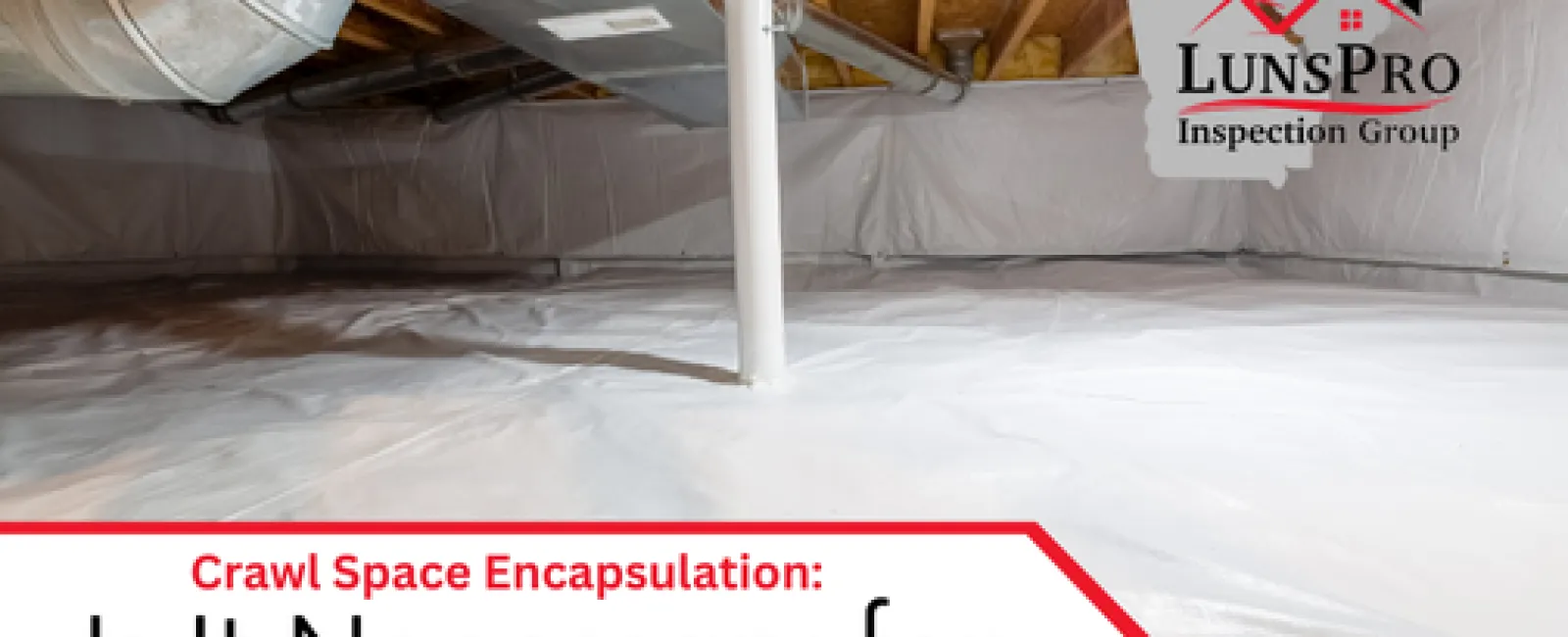Crawl spaces are often overlooked, yet they play a crucial role in maintaining your home's structural integrity and indoor air quality. Encapsulation is becoming increasingly popular as a solution to manage moisture and prevent issues like mold, mildew, and wood rot. However, it's important to know that while encapsulation has its benefits, it's not always necessary. Here's what you need to know to keep your crawl space in top condition.
What Is Crawl Space Encapsulation?
Crawl space encapsulation involves sealing the area with a vapor barrier, insulating the walls, and often adding a dehumidifier to control moisture levels. The goal is to create a controlled environment, preventing outside moisture from entering and reducing the risk of mold and pests.
Encapsulated crawl spaces are cleaner and easier to maintain, as we saw during a recent inspection. The vapor barrier prevents dirt and debris from accumulating, making it a more pleasant area for inspections and maintenance.
Is Crawl Space Encapsulation Always Necessary?
While encapsulation is a trending solution, it's not always necessary for every home. The primary goal for any crawl space—encapsulated or not—is to keep it dry. Proper moisture management can often be achieved through less invasive means.
For homes with crawl spaces, the key is ensuring good drainage around the foundation. Water should be directed away from the home, preventing moisture from seeping in. It's also essential to keep wooden joists and structural components elevated from the ground to prevent wood rot and termite damage.
Encapsulation may be beneficial in areas with high humidity, frequent flooding, or homes with chronic moisture issues. However, in many cases, simple measures like proper grading and ventilation can be just as effective.
The Importance of Proper Grading
One of the most critical aspects of crawl space health is the grading around your home. Even with encapsulation, improper grading can lead to water pooling against your foundation, eventually seeping into your crawl space. Ensuring that the ground slopes away from your home is a simple but effective way to prevent moisture problems.
During a recent inspection, we found a well-encapsulated crawl space, but we reminded the homeowner to check their exterior grading regularly. Even the best vapor barrier can't prevent issues if water is consistently flowing toward the foundation.
What You Need to Know About Ventilation
Adequate ventilation is another vital factor in maintaining a healthy crawl space. Even with encapsulation, it's essential to ensure that the area can air out properly. Stagnant air and trapped moisture can lead to mold growth, even in encapsulated spaces.
If your crawl space is not encapsulated, you may need to consider installing vents or fans to improve airflow. This can help keep moisture levels low and prevent the buildup of harmful contaminants like mold and mildew.
When to Consider Crawl Space Encapsulation
If your home experiences persistent moisture issues, encapsulation might be a good solution. Homes in flood-prone areas, or regions with high humidity, often benefit from the extra protection that encapsulation provides. It creates a barrier that prevents moisture from entering, reducing the risk of mold, mildew, and pests.
However, it's essential to remember that encapsulation isn't a one-size-fits-all solution. Regular inspections and maintenance are still necessary to ensure that the system is functioning correctly and that no hidden issues are developing behind the vapor barrier.
Crawl space encapsulation can be an effective way to manage moisture and protect your home, but it's not always a requirement. The key is to focus on keeping your crawl space dry, well-ventilated, and properly graded. Whether you

